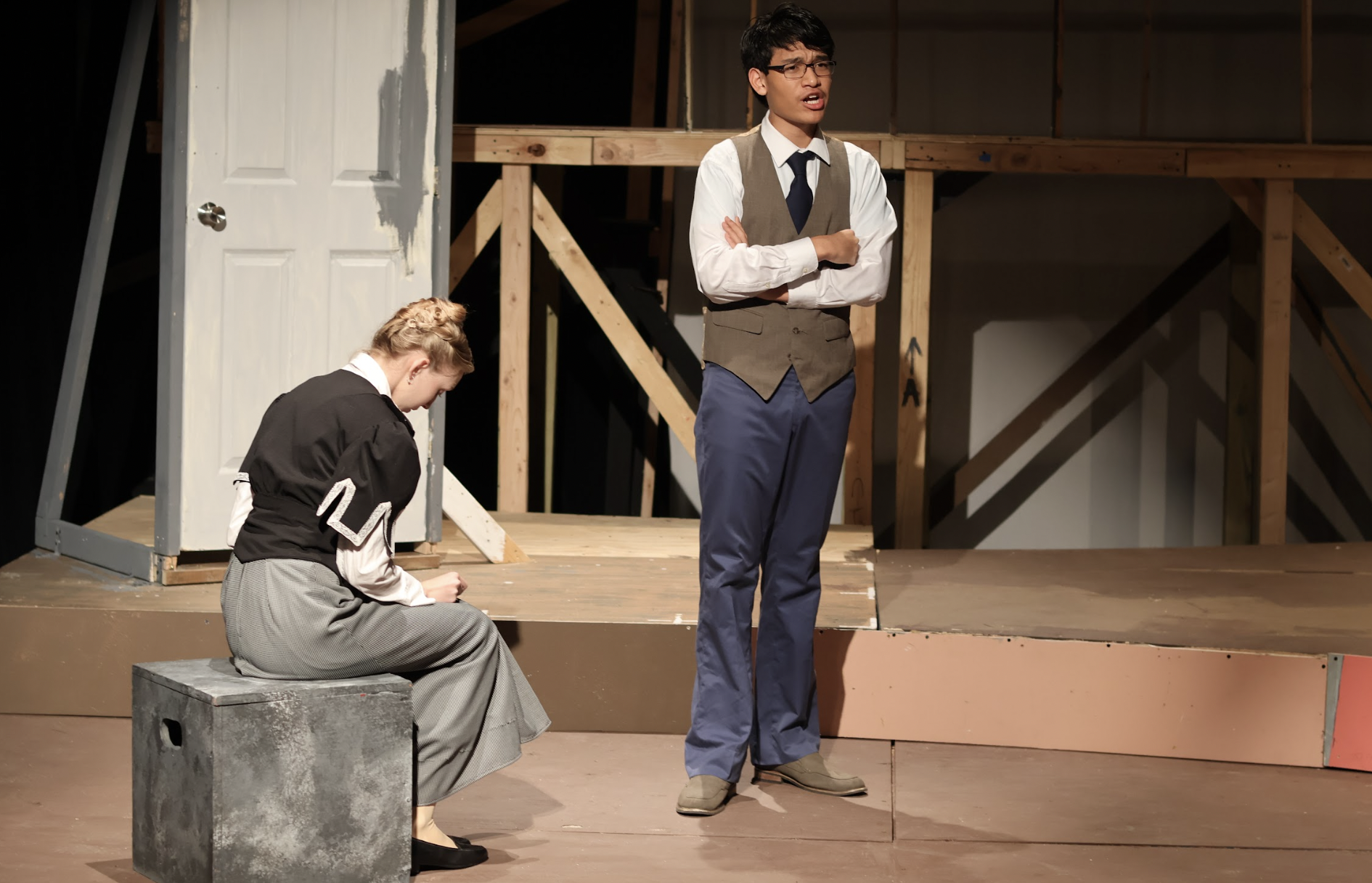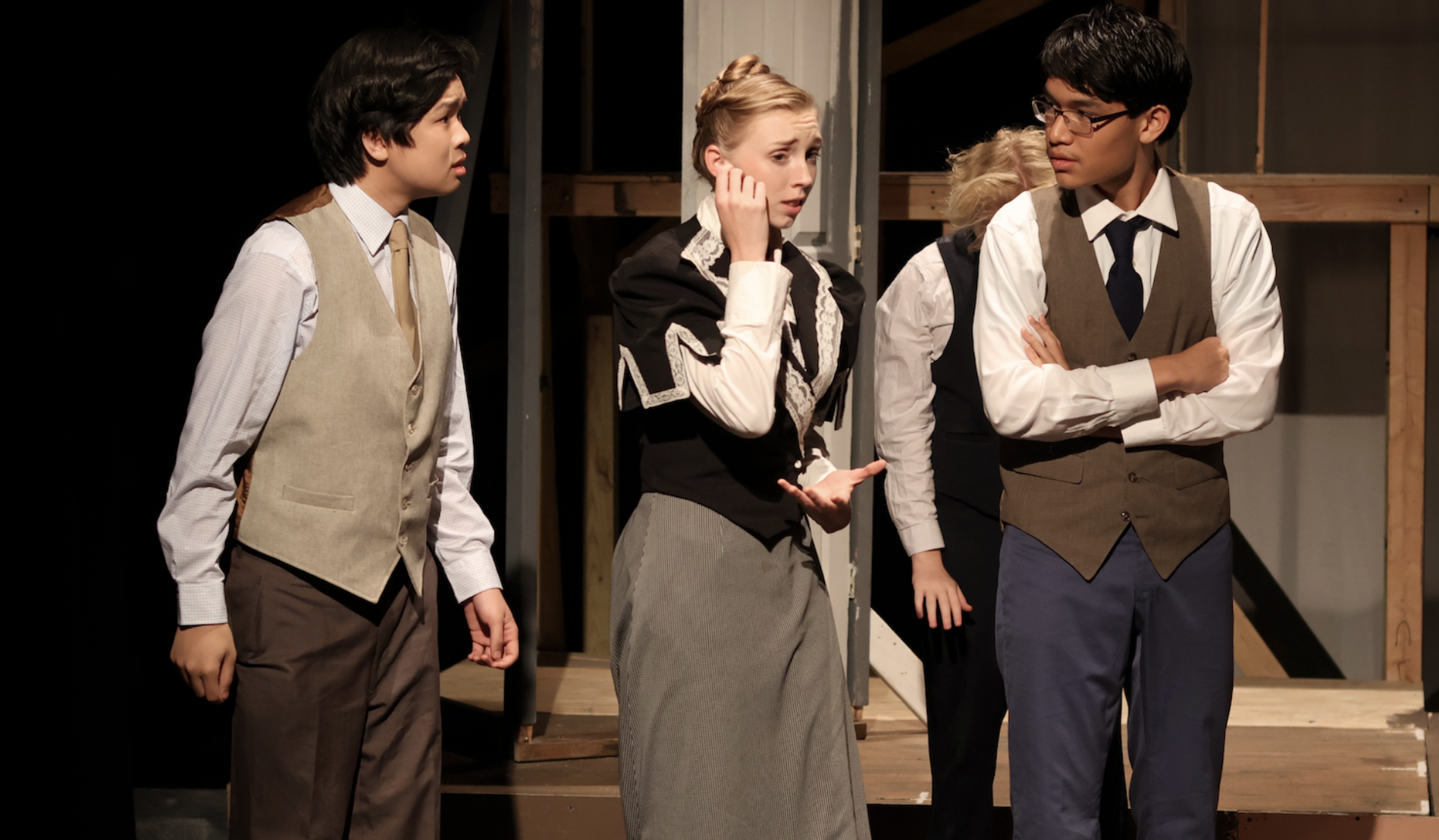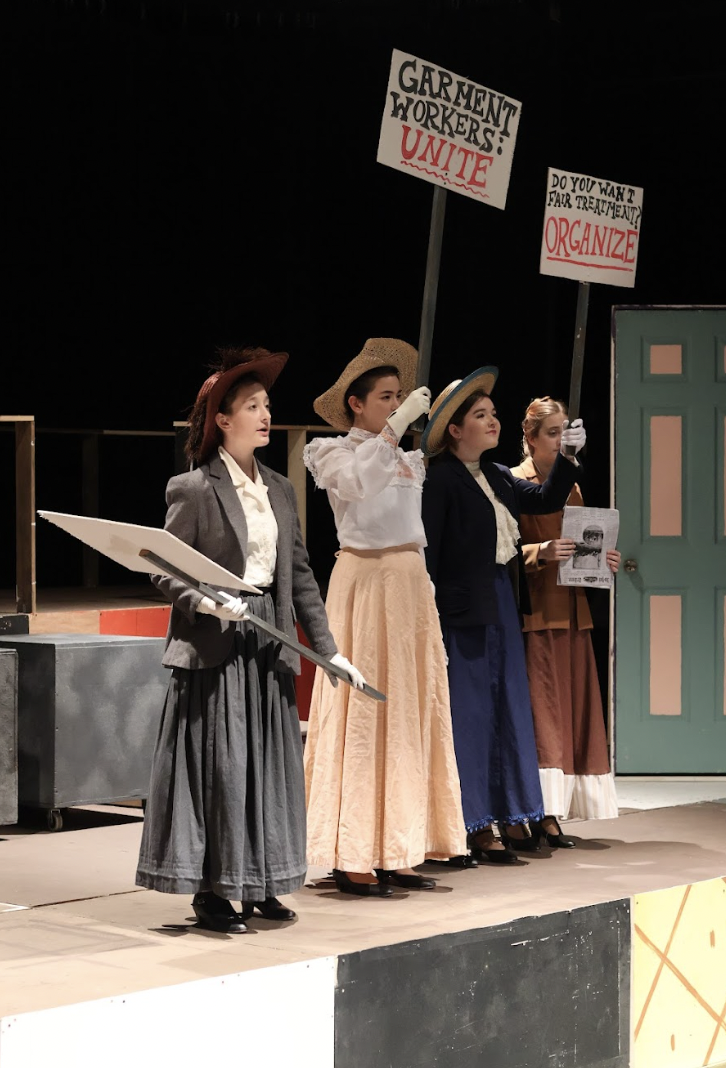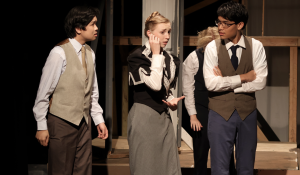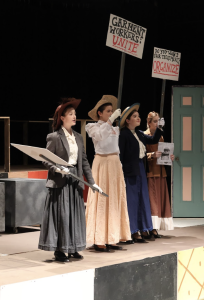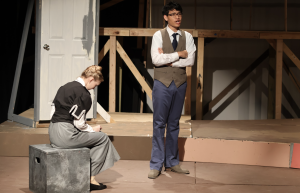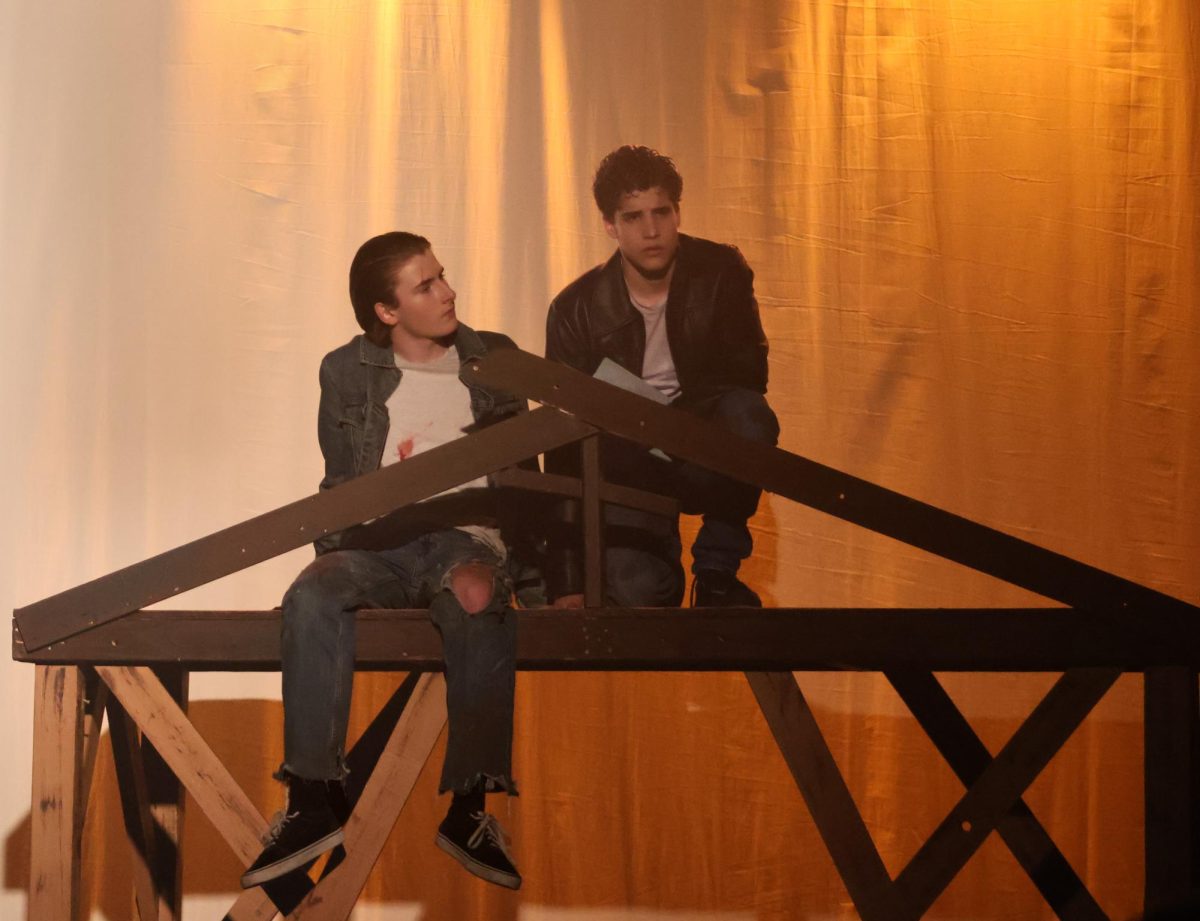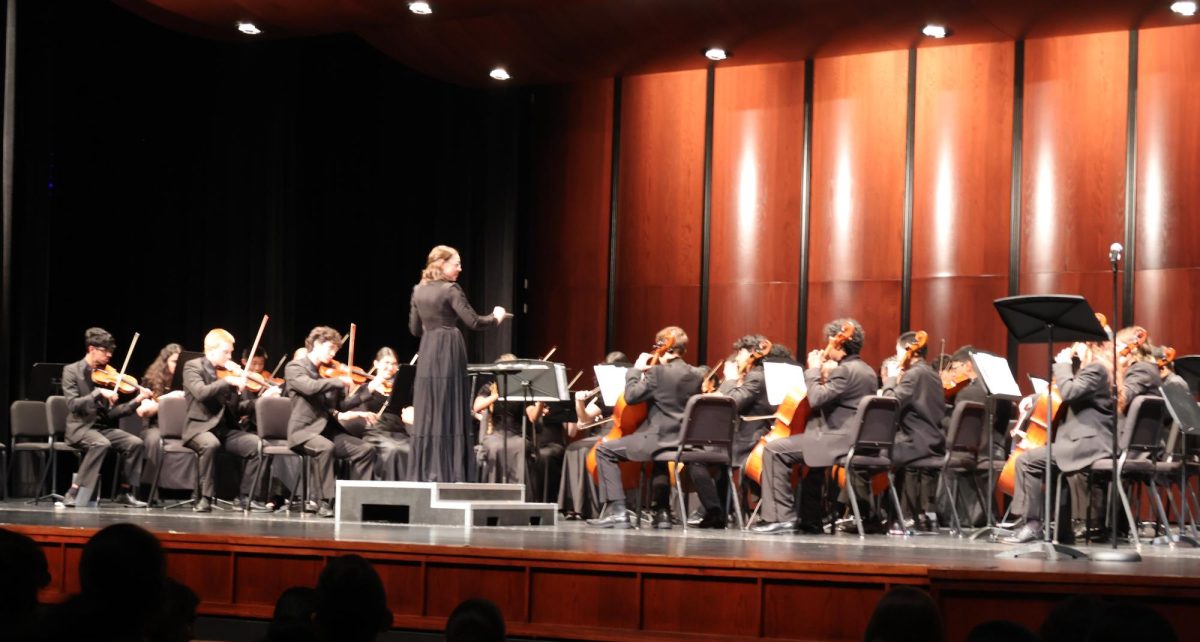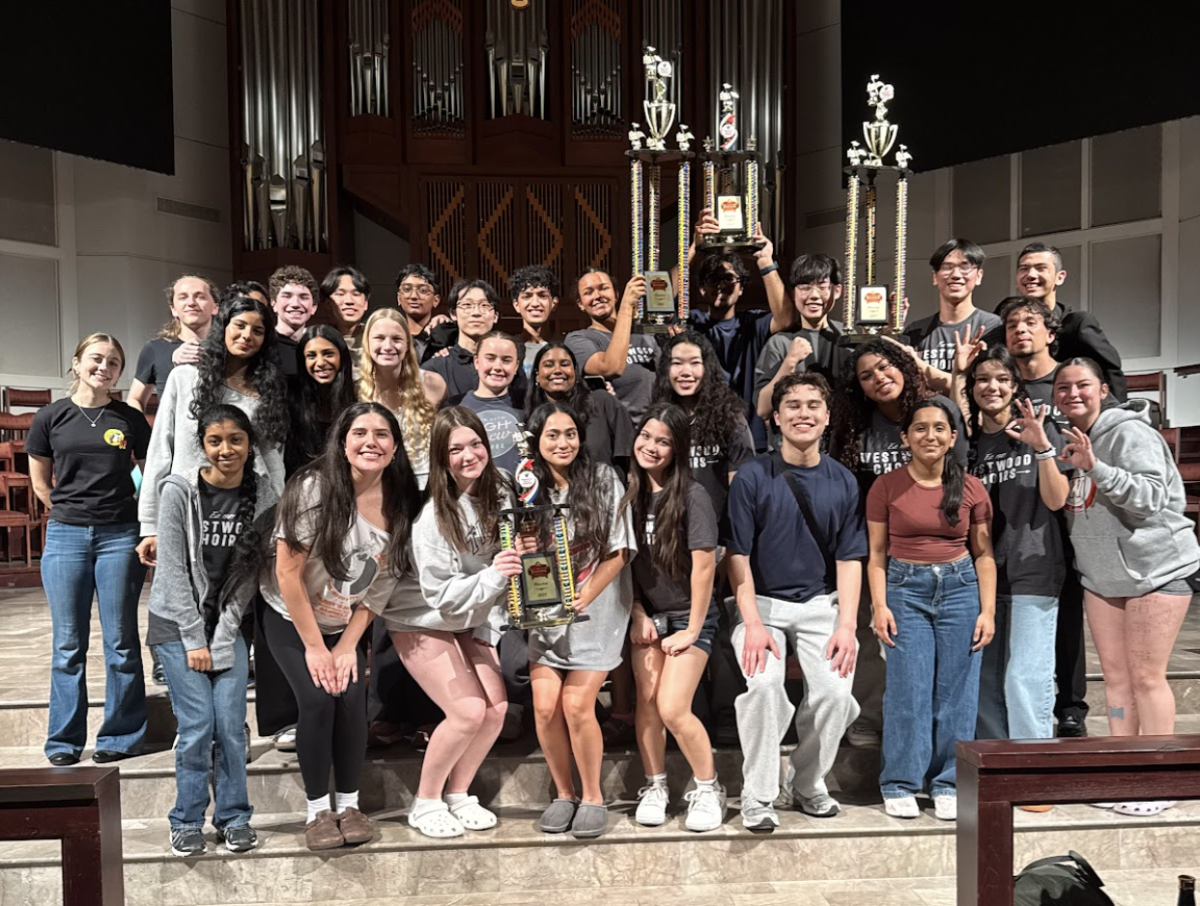With a storm of period dresses, flashing red lights, and newspaper, Westwood Theater’s The Triangle Factory Fire Project sprung to life, commencing their season with a documentary-style bang. On Thursday, Oct. 5, The Triangle Factory Fire Project opened at the Black Box, where it would go on to run for two more night shows and a matinee.
The play, a historical drama about the Asch factory fire of 1911, featured real people, using real testimonies, statements, and other first-person accounts from the factory fire and the subsequent court cases. Connor Wormington ‘25 played William Shepherd, a journalist at the scene of the fire and the play’s narrator. Wormington had to balance authenticity with intensity for the sake of audience engagement.
“With this show,” Wormington said, “I was really worried about playing the character wrong, or in a way that invalidated the real experiences of the people that actually had to live through the fire. I had to keep Shepherd normal, but also had to make sure there was enough intensity that the audience could understand the impact of each line.”
In addition to just playing real characters, each actor also had to portray multiple characters, sometimes up to three in the span of the couple-hour show. Saffron Kollodge ‘26 portrayed both Max Schwartz and Yetta Lubitz during one scene, and often had to change her costume and approach in a matter of minutes.“Differentiating characters for this show was hard because you had to transition between them so fast,” Kollodge said. “Sometimes I only had a matter of four or five lines until I had to come on as a whole new person. For Yetta, I tried to emphasize how small and afraid she felt [with] quick movements and stances, while Max was a more still character with a downward focus.”
Similarly, Kristos Puliadi ‘24 played factory owner Max Blanck and fireman Edward Croker, and strove to find genuine understanding of both men.
“I did extensive research for both of my [characters],” Puliadi said, “figuring out what they did before the events of the play and after, to make sure that it wasn’t Kristos on stage, but it was Max Blanck and Edward Croker, and that their histories and characters were distinct, unique, and separate onstage.”
The actors met considerable challenges during the process; however, notably, Puliadi explained that “it was an exercise in endurance” to put on a dramatic play firmly grounded in history. From a more technical standpoint, Wormington notes that the testimonial-style line delivery made the play’s chronology complicated to follow and portray.
“[Performing] was also hard because there wasn’t a lot of interacting with other actors,” Wormington said, “so I had to stand alone and do well without others supporting me. Luckily, I could share occasional stage time with other people, which took some pressure off of me.”
Despite the technical challenges posed by the show’s nature, and through the work required to find authenticity in portraying real people, company members of The Triangle Factory Fire Project found inspiration and appreciation in the pursuit of portraying history.
“This is someone real,” Puliadi said, “and you’re trying to make sure that the audience gets a real understanding of who these people are. It was a really serious play, but I think it’s a really cool risk that we took.”
Westwood Theatre takes the stage next at the Hartfield Performing Arts Center on Nov. 14 to perform this year’s Children’s Show, Miss Nelson is Missing.

